No matter how fresh you buy them, oyster mushrooms always seem to be just a few days away from becoming slimy, wrinkly, and unappetizing. And we all know that having to toss a full pack of mushrooms is not only a waste of food and money but is also straight-up heartbreaking! So how do we save and store them in a way that prevents this from ever happening again? Keep reading to discover how to store oyster mushrooms yourself and prolong their shelf life.
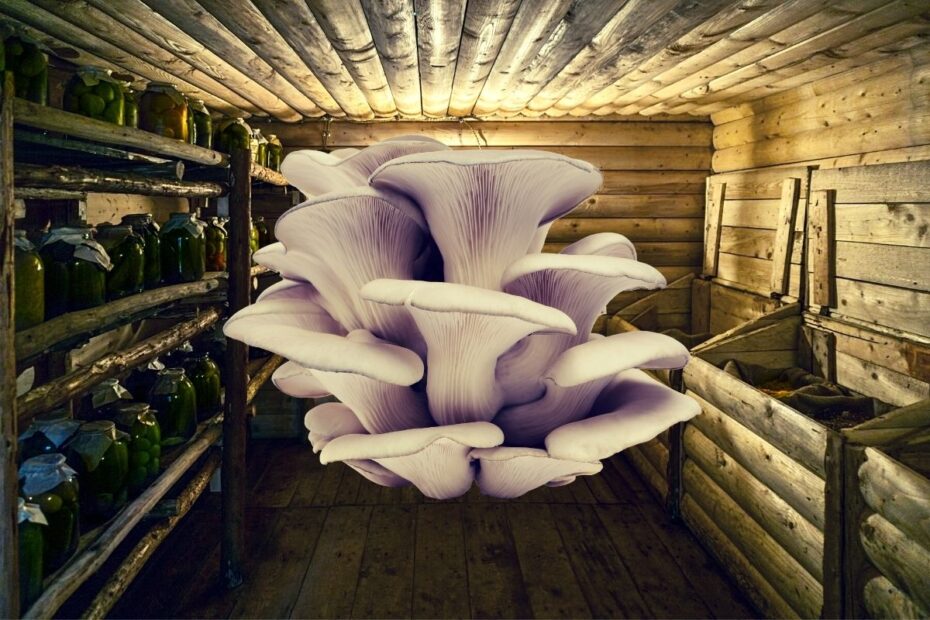
What are oyster mushrooms?
Known for their unique meaty texture and umaminess, oyster mushrooms (aka pleurotus ostreatus) are mushrooms that have extremely short (or absent) stems. Their stems are usually off-center and their wide, fan-like caps resemble their namesake, the oyster. Widely consumed and loved by mycophiles around the world, they are most often found in the wild growing on fallen logs or dying trees in small overlapping clusters.
King oyster mushrooms and pearl oyster mushrooms (pictured below) are the two most common types of oyster mushrooms.
These both make great additions to pastas, sauces, stews, soups, stir-fries, and other dishes. In fact, there are 11 ways to cook with oyster mushrooms.
If you happen not to find them anywhere or don’t plan on growing them, don’t fret. You can always make do by using some oyster mushroom substitutes like lion’s mane, chanterelle, maitake, or shiitake mushrooms. You’ll be surprised by how well these options still manage to elevate your recipes!
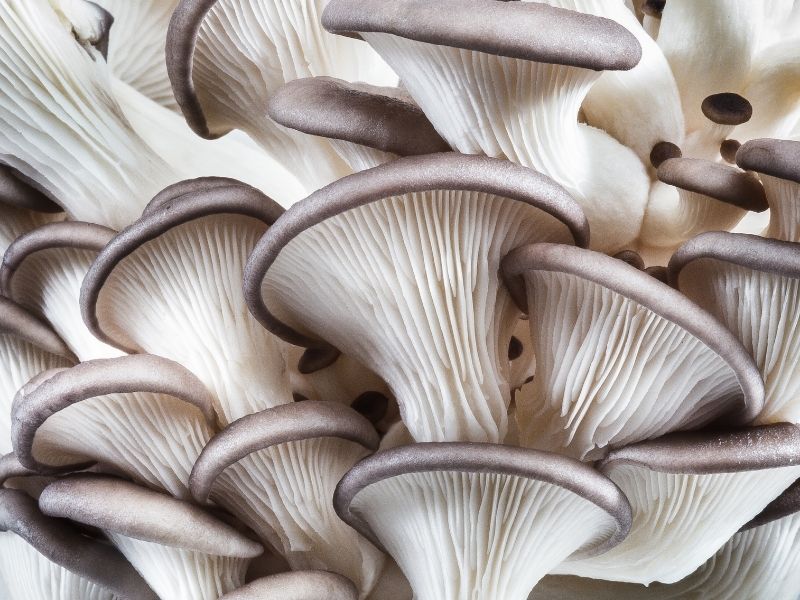
How to choose?
Because mushrooms have such a short shelf life, it is imperative to buy the freshest ones you can find. Here are some tips you can pay attention to:
- Note the date of harvest on the packaging. Make sure that it is always within 1-2 days of your shopping.
- The package is devoid of moisture and the mushrooms are packed completely dry.
- Look for young mushrooms with caps that are uniformly colored and free of any brown spots.
- You want to avoid any mushrooms that are turning yellow.
- Keep in mind that fresh mushrooms are not supposed to have any blisters, blemishes, or indents either.
- In terms of texture, pick the ones that feel firm and smooth, being sure to avoid mushrooms that feel slippery or slimy.
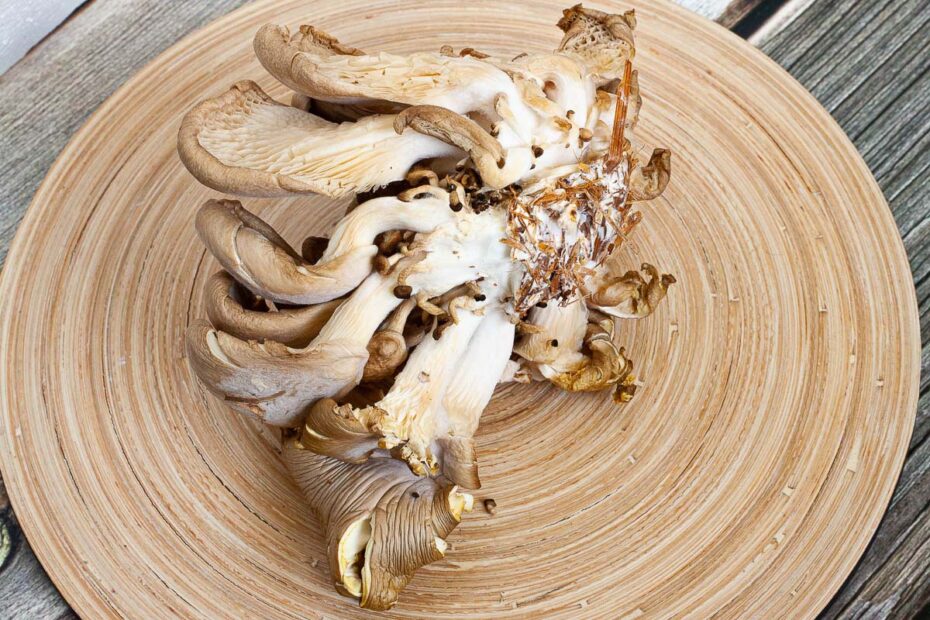
Mushrooms that are packed too tightly may appear to be broken or have slight cuts and cracks around the edges of the caps. If you see this, don’t worry, as this alone does not affect taste or texture. Just check to make sure there are no accompanying changes in color or quality.
Prepare them for storage
Once you pick out and bring your oyster mushrooms home, it’s time to figure out how to store them to keep them fresh. Do you refrigerate them or store them in your pantry? Or is there a better way altogether in order to store them for longer? Before we get to answering all these questions and deciding on the best way to store them away, there are a few things you will need to do first.
Pre-packaged oyster mushrooms can be stored in the fridge straight away, as long as the packaging material has perforations for allowing air in and moisture out. Every time you use a few mushrooms, cover the ones that remain with plastic wrap lightly and punch in a few holes. They’ll be good to last for a while longer.
If you see some questionable parts, here is how to prepare them for storing:
- Unwrap and check them from all sides. Tear off any parts where you find white fuzz, mold, yellow spots, or yellow slime.
- Cut off any parts that look wet, dirty, or moist.
- Avoid washing them before storing them because getting them wet may cause them to rot quicker and damage more easily.
- As these mushrooms grow on logs not on dirt, you may not even need to clean them. If you find “dirty” spots you don’t like, just gently wipe them clean with a piece of cloth or paper towel.
5 ways to store oyster mushrooms
1) In the fridge (up to 1 week)
The best way to store Mushrooms can be stored in the fridge for up to 1 week without a problem.

Things to do
- If you bought them pre-packaged and wrapped, then you can store it in the packaging but open it up to allow air to flow and prevent condensation.
- If you instead prefer buying them fresh in bulk from the farmer’s market, growing them yourself, or even foraging for them, you are better off storing them in a paper bag or uncovered on a paper towel in the bottom drawer of your fridge. Mushrooms stored for a long time tend to release moisture, which both paper bags and paper towels can absorb with ease, preventing them from going bad.
Things to avoid
- Just take special care not to place them near any pungent foods like onion, celery, garlic, ginger, or durian when storing them in the fridge. This is because mushrooms easily absorb the scents of foods that are placed around them, affecting the way they taste.
- I also don’t place them near ethylene-producing fruits and veggies like bananas as they may speed up the maturation and your oyster mushrooms will go bad faster.
2) In the freezer (up to 1 month)

Freezing is a great option if you want your oyster mushrooms to last approximately a month and not go bad. They can be frozen either raw or in their stir-fried state, as long as they are stored in an airtight container or a dedicated freezer bag. To make them ready for use again, all you have to do is thaw them for a few minutes and they’ll be good to go.
3) In the pantry (up to 48 hours)
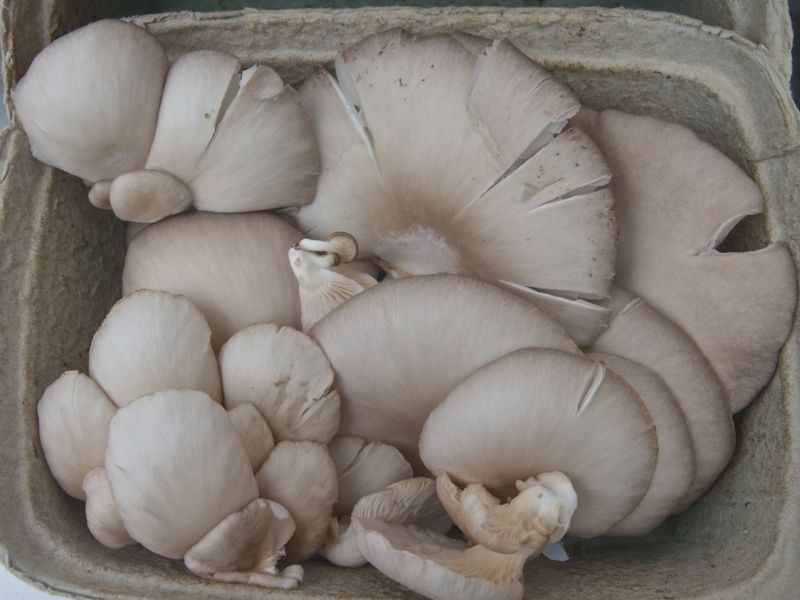
The fridge is the best place to keep mushrooms fresh because of their high water content. Keeping them in your pantry may allow them to remain viable for a day or two at most. However, if the intention is to keep them fresh and tasty for up to a week, the refrigerator is your best option.
4) Dehydrating (up to 6 months)
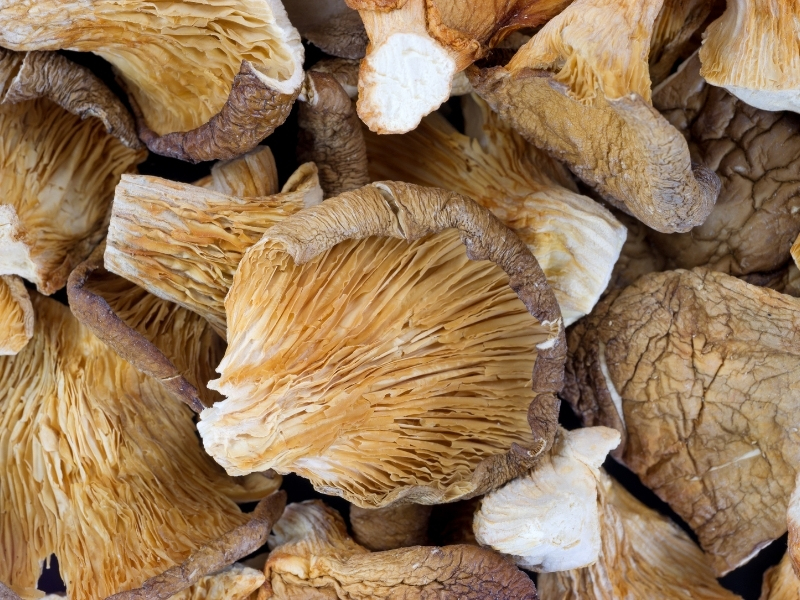
Dehydrated mushrooms last up to 6 months on the shelf. When done for commercial purposes, mushrooms are usually dried using a vacuum or some other complex dehydrating equipment.
If you want to try dehydrating mushrooms at home, a food dehydrator is the easiest way to go about it. In the case that you do not have a dehydrator, a simple oven and a wire rack or a microwave will do the trick just fine as well. Another easy way to do it is to air dry them in direct sunlight.
This study compared 4 methods (freeze-dried aka lyophilic, sun-dried, microwave-dried, and hot air-dried) and found that mushrooms are easier to rehydrate after freeze-drying and sun-drying, however, interestingly the most nutrient (especially iron) was retained via microwave-drying and hot air drying.
If you’re left wondering “why so small?” after drying out your mushrooms, don’t worry – that’s normal! Dehydrating will cause them to shrink to a much smaller size, but this does not affect their taste. To rehydrate them, simply soak them in water for a few minutes and then use them as you would fresh mushrooms.
5) Canning (up to 1 year)
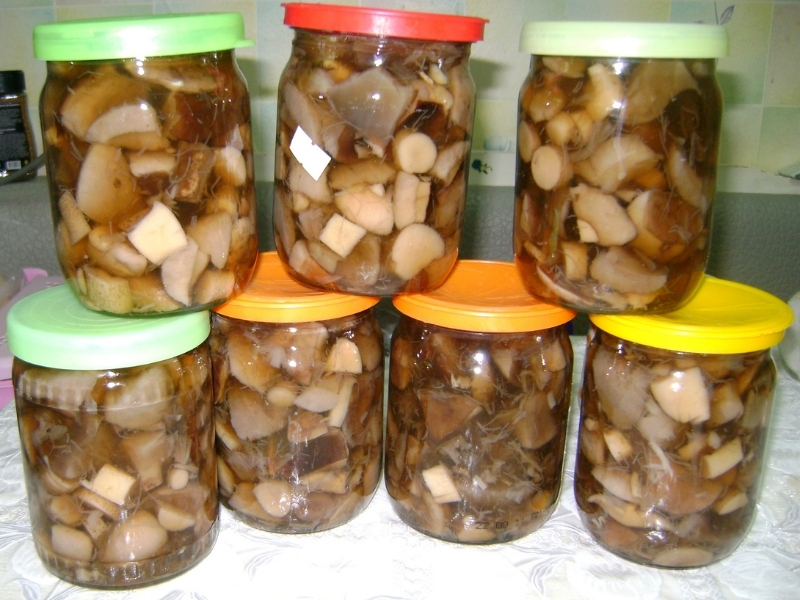
Pickling oyster mushrooms is another fun way to preserve them while also giving them a unique taste. Not only does this method of preservation allow them to keep for a very long time but also turns them into excellent toppings for sandwiches, burgers, pizzas, and more.
How to can oyster mushrooms? You can also slice these mushrooms into tiny pieces, blanch them and cook them in a pressure canner. By storing them later in pint jars, you can increase their shelf life by up to one whole year.
More information on oyster mushrooms
If you need some delicious oyster mushroom recipes to try or read more about them here:



Hectic13
I wish you would have mentioned just exactly how to microwave dry the mushrooms.